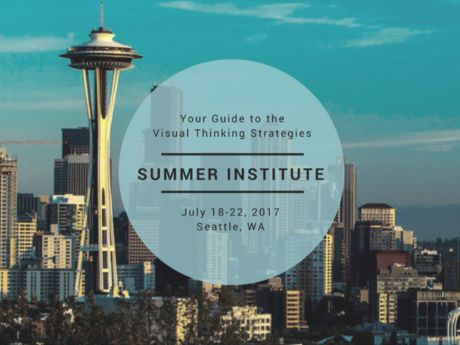-

November 13, 2023
Caucus of Social Theory in Art Education (CSTAE) Column: Winter 2023
Making Sense of Truth in Art Education Through Social Theory
-
June 1, 2022
NAEA Position Statement on Visual LiteracyNAEA Position Statement on Visual Literacy (Adopted April 2014; Reviewed and Revised March 2017; Reviewed and Revised March 2022)
-
August 24, 2021
NAEA Position Statement on Use of Imagery, Cultural Appropriation and Socially Just PracticesNAEA Position Statement on Use of Imagery, Cultural Appropriation and Socially Just Practices (Adopted March 2017; Reviewed with recommendations March 2020; Reviewed and Revised February 2021)
-
August 24, 2021
NAEA Position Statement Regarding the Use of American Indian, Alaskan Native, and Native Hawaiian Mascots in Educational SettingsNAEA Position Statement Regarding the Use of American Indian, Alaskan Native, and Native Hawaiian Mascots in Educational Settings (Adopted April 2010; Reviewed March 2013; Reviewed March 2016; Reviewed and Revised February 2021)
-
February 28, 2018
NAEA Advisory: Approaches to Teaching Critical Visual LiteracyNAEA Advisory: Approaches to Teaching Critical Visual Literacy (Spring 2018)
-

May 3, 2017
external resource from VTS, Register Now for the 2017 VTS Summer Institute
Visual Thinking Strategies (VTS) will hold its 2017 Summer Institute, from July 18-22, in Seattle. This week-long event, co-hosted by the Seattle Art Museum, the Frye Art Museum and the Seattle Aquarium, convenes VTS practitioners from around the world to connect and network with their peers and explore the application of VTS across different age levels, content areas and art forms. Institute workshops, designed for both VTS beginners and experienced practitioners, focus on developing and strengthening facilitation skills in utilizing visual arts discussion to enhance learning for students and increase student engagement and performance. Other events of the institute include share-outs, peer-to-peer roundtables and panel discussions.
VTS -

February 23, 2017
external resource from ASCD, ELLs, Visual Arts, and the High-Stakes Writing Monster
ELLs, Visual Arts, and the High-Stakes Writing Monster Gaps in language proficiency can mask writing strengths and weaknesses, giving teachers little guidance on where to adjust instruction. Asking students to read paintings as texts can provide a clearer overall picture of student needs.
ASCD -

January 4, 2017
external resource from Education Week Teacher, The Power of Visual Notetaking
I have been a passionate advocate for visual notetaking in the classroom since I stumbled upon author and designer Mike Rohde’s book, The Sketchnote Handbook, about two years ago. As an elementary art specialist, I saw that, after incorporating the book’s techniques into my classroom, using simple images to synthesize content and demonstrate understanding came naturally to students. Kids learn to draw before they write, and pictures are how they make sense of the world.
Education Week Teacher -
January 17, 2016
external resource from Education Week, What Is ‘Artistic Literacy’? Framework for Arts Standards Takes LookWe talk a lot about literacy here. The ability to read and write. Math literacy. Science literacy. But what does it mean to be artistically literate? A document issued last week by the National Coalition for Core Arts Standards takes a stab at this question.
Education Week -
January 15, 2016
DBAE Literature ProjectThe idea of disciplined-based art education that was associated with the Getty Center for Education in the Arts (later renamed the Getty Education Institute for the Arts and eventually discontinued) during the 1980s and 1990s can be understood as contributing to a major effort by writers in the field of art education since mid-century to recast the aims and teaching of art in the schools. The Getty initiative, in other words, was not novel or revolutionary; it took its lead from existing ideas in the field which held that the teaching of art in the schools should be more substantive and demanding. Recognizing the error of past efforts to reform art education that attempted to bypass the field, Getty policymakers understood the wisdom of involving the field in significant ways. It was perceived that the field was moving in the direction of increasing the intellectual content of aesthetic learning by engendering in young people a well-developed sense of art that is preconditional for the intelligent and sensitive engagements of works of art and other things from an aesthetic point of view.
Showing all 10 items
NAEA Professional Learning Studio
Professional learning from anywhere in the world! Access live and on demand webinars, workshops, and more. Earn professional development credit or university credit!

National Art Education Foundation
The National Art Education Foundation (NAEF) invests in innovative initiatives to support instructional practice, research, and leadership in visual arts education.

